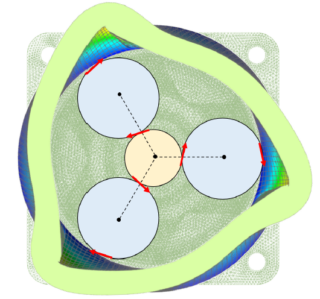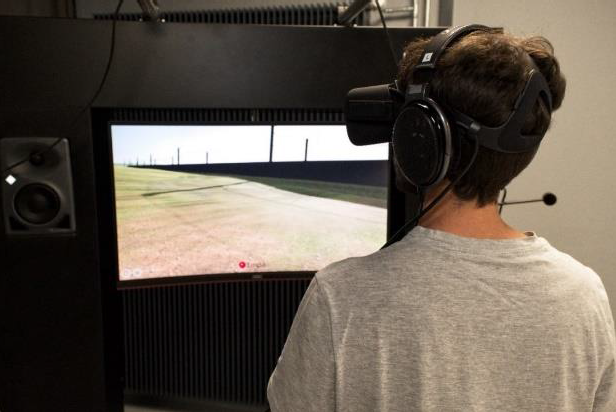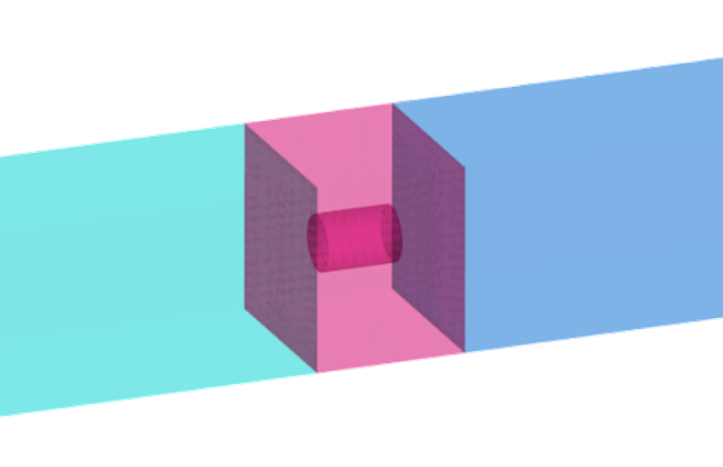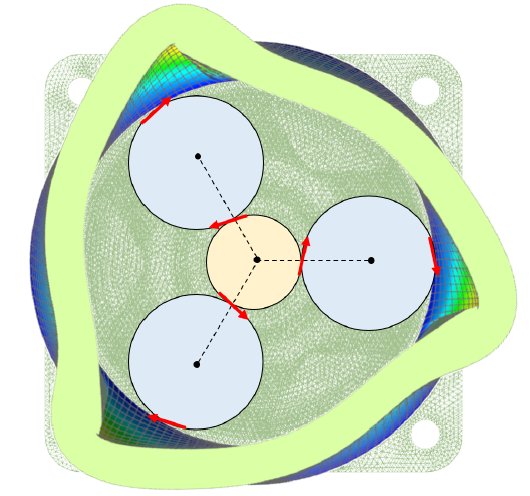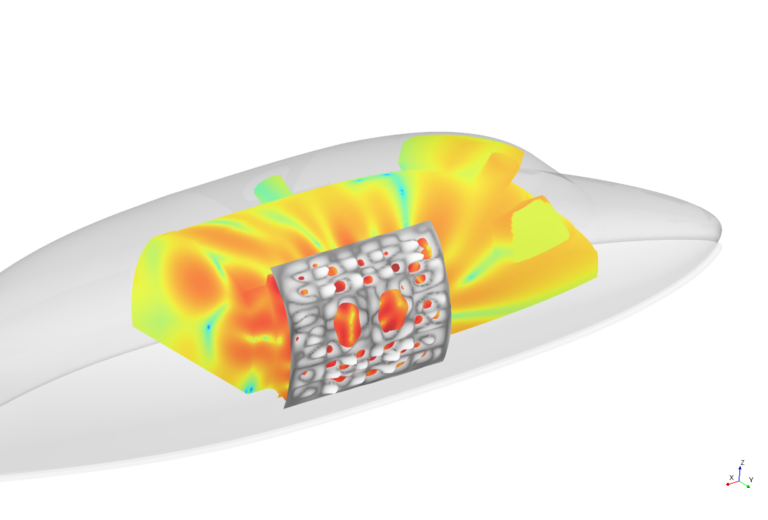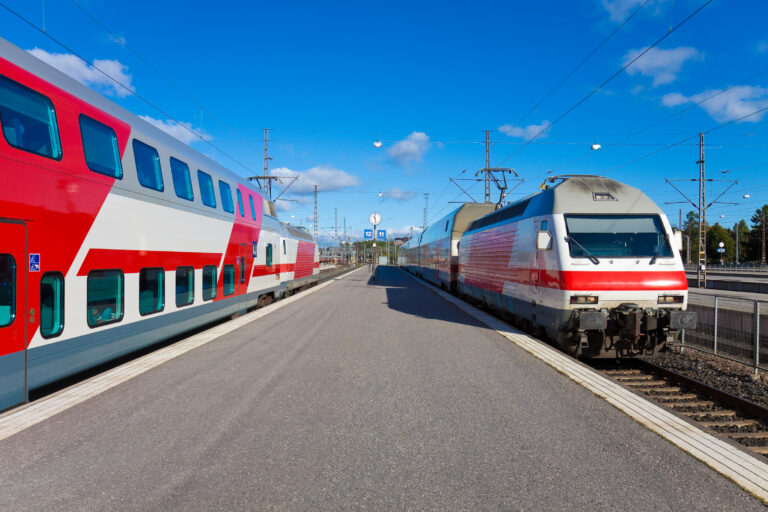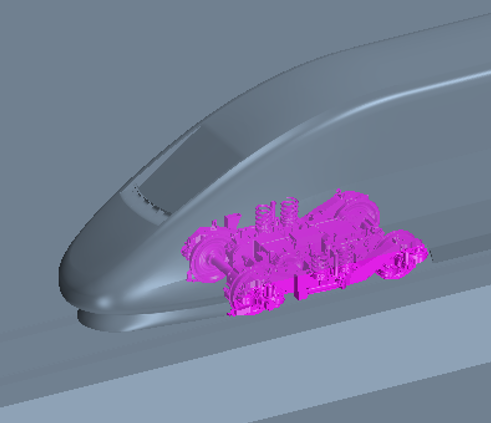Optimize the dynamic behavior of your planetary gears using a fast and validated prediction method. Our innovative approach addresses the primary source of vibration— static transmission error and mesh stiffness fluctuations during the meshing process—and provides a comprehensive solution for computing the whining noise caused by multi-mesh excitations.
Why choose our method?
- Comprehensive Excitation Characterization: We simultaneously analyze all contact points within the multiple gear meshes, capturing the intricate details of internal excitations that impact gear performance.
- Advanced Dynamic Response Calculation: Utilizing a modal basis projection, we solve the coupled equations of motion with an iterative spectral method, ensuring fast and accurate computation of the dynamic response.
- Precise Modulation Analysis: Our method evaluates the modulated response of the planetary gear housing, specifically the ring gear, under varying operational conditions. This allows an assessement of how relative positions between planet gears and the ring gear affect the time response.
Our numerical results are not just theoretical—they have been validated with regards to experiments, ensuring accuracy and real-world applicability.
Experience the future of gear system optimization with our cutting-edge analysis technique. Enhance your gear performance, reduce noise, and control the dynamic behavior of complete drivelines.
Special thanks to our university partner, the LTDS (Laboratory of Tribology and System Dynamics of the Ecole Centrale of Lyon) for supporting our research work, and to the ASRC (non-profit association uniting French Private R&T Organizations).

